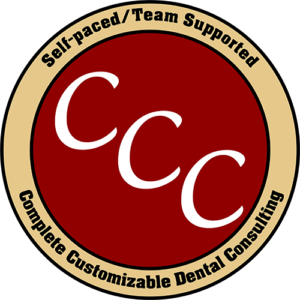Blind Spots in Dentistry™: Why you should have an annual board meeting, and the 10 people who should always attend
Blind Spots in Dentistry™: Why you should have an annual board meeting, and the 10 people who should always attend
Not only do dentists need an annual plan and budget, they should have at least one annual ‘Board of Directors’ meeting to review relevant information pertaining to the immediate past, present and future of the practice. This Board is ideally comprised of:
- Doctor
- Dental Consultant
- Dental CPA
- IT person
- Software rep
- Financial adviser
- Insurance broker (medical, auto, liability, building)
- Supply rep
- Bank or loan rep
- Practice Administrator or Office Manager
This type of meeting keeps you focused on the present and helps you clarify your vision for the future. This minimal amount of time spent with your advisors will not only help you provide direction for your practice, but allow you to spend more time on performing dentistry in the long-run. In school you relied on your professors, clinical advisors, and counselors to guide you. Why stop now? Now is the best time to surround yourself with other experts.
While the idea of organizing and running an annual meeting might seem daunting, it doesn’t have to be if you break it into its component elements. The same goes for the time commitment. An hour or two is all you need to obtain the peace of mind that your business is moving in the direction that you want it to – forward.
What should be on the agenda
The agenda of the meeting is to discuss the practice’s state of affairs, what changes might be recommended before putting the budget in place, what “rainy day fund” might be needed if technology replacement or additions are needed, and other relevant issues.
Ideally, the meeting shouldn’t last more than two hours. The dentist and consultant, along with your practice administrator or office manager should set the agenda and run the meeting. The consultant can act as Facilitator while the Office Manager can record the meeting notes.
Each member of the Board contributes to the meeting by reporting on their area of expertise and how it impacts on the future of the business. Allot a defined time for each report to ensure the meeting doesn’t ramble.
Review old business along with new items. Ultimately, you want to exit the meeting with an Action Plan. The action plan includes what needs to be done, who will do it, when it will be accomplished, as well as who receives the information.
In order to plan your budget you need to answer a multitude of questions:
- How well did you do the past year?
- Do you need to increase your budget in a specific area to accommodate new equipment purchases?
- Do you need a loan for the purchase?
- Do you want to “budget” for the new item and purchase part way through the year?
- How are you going to increase your production/collections to achieve a higher profit?
- Will there be raises for the team? If so, when and how much?
- How well did you do with non-surgical periodontal therapy in your practice? Do you need to improve this area?
- What CE will you take? Your team?
- How many vacation days will you take?
- Are your HIPAA, OSHA and HR systems up to date and compliant?
- Are there going to be any changes in your practice software that requires upgrades in hardware?
- Are there any issues with current hardware?
- Is backup working well both onsite and offsite?
- Is there a way to save on supplies?
- Lab costs – will they increase or decrease?
- Are you buying a CEREC or Cad/Cam?
- What education will you need to implement new equipment purchases?
- Are you considering adding treatment rooms/renting more space?
- Are you considering buying another building/practice? (See below.)
- How much money do you need to put away for your retirement?
Also, depending on where you are in your business life, discuss:
- What is your exit strategy?
- Will you hire an associate?
- Will you change your current associate become a partner?
- Will you sell to a corporation and work for a few years?
While the concept of a Board Meeting may feel odd at first, doctors who have made this a part of their annual planning routine know first-hand the benefits and peace of mind it brings to their practice.
